The makeup industry is embracing diversity. Whether it’s premium or budget, brands are on a mission to ensure they have foundation shades to cater to a diverse range of skin tones.
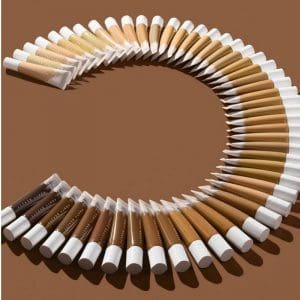
However, lurking beneath the surface of this celebration is a not-so-secret story of isolation and racism, with black women and those with darker skin tones systematically left out of beauty in advertising, product innovation and recruitment for decades
HISTORY OF COLORISM IN INDIA
Ancient India didn’t discriminate on the basis of color. Presence and acceptance of beauty, valor and status irrespective of the skin color was time and time again established through the ancient texts. Dark color didn’t attach a stigma and was used as a describing feature of a population or person, many times as an attribute of beauty itself unlike the modern times.
Earlier, dark skin tone was acceptable in Hindu culture and was seen as beautiful since it was the skin tone of some powerful gods and goddesses, heroes, warriors, princesses and it was quite unlikely of people to look down upon people with a dark complexion. It is important to mention here a few examples to prove the statement:
Hindu ancient texts show that Krishna was the dark hero of Yadava tribe. Krishna, who is considered to be an incarnation of Lord Vishnu, has dark skin tone. The word Krishna itself means ‘black’ in Sanskrit.
Hindu deity Lord Ram is known to be black in color.
Draupadi, the strong lead protagonist in Mahabharat- the Hindu epic is described as a black and extremely beautiful woman.
Parvati, the wife of Lord Shiva is again described as having wheatish complexion and extremely beautiful.
Kali- the goddess of power and strength, the name itself means who is black in color; ‘Shyamli, meaning ‘of dark color’ has been used to define beautiful dark color females since olden times.
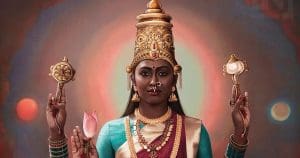
The history of colorism in India actually dates back to the times of British colonial rule where the British discriminated Indians on the basis of their skin color. A large number if Indians worked in the sun and therefore the amount of melanin in their skin was comparatively higher than the upper caste Indians who stayed indoors. The upper class individuals with lighter skin color enjoyed more privileges than those with dark skin. Entry to restaurants and educational institutions was prohibited for “Black Indians” with entry boards clearly stating “Indians and dogs not allowed”.
Skin tone is still so deeply attached to the normal Indian psyche that it gets confused with the societal value system of caste, class, and religion. Skin tone also forms various strata of variables and acceptability in society.
Indians have great love for fair skin. No one directly wants to talk about it but the love is so apparent that many actions reflect it. You can pick up any newspaper and go to the matrimonial section or even visit any such website, the amount of people who want a “fair” wife is pretty huge and disappointing in a country where people are just different shades of brown. Most Indians show apparent ignorance about the practice of exclusion and discrimination based on the skin tone of a person although it is a deep-rooted problematic practice embraced by both the oppressor and the victim.
Colorism forms a formidable form of discrimination but it is hardly raised. This conscious attempt by the system in power to make the deeply embedded problem look oblivious is a sad reality and putting the attention away from asking the woman question. The ideal of beauty that has been ingrained in the mind of a common man through generations of colonization has been deepened through the fair skinned images all around via the growth of media and popular culture. This same ideal of beauty is now influencing and shaping the behavioral practices and preferences. It is only regrettable that a country boasting of its cultural and geographic diversity irrespective of the same choses a similar ideal when it comes to skin color.
BOLLYWOOD AND COLORISM
TV programmes, movies, billboards, advertisements, they all reinforce the idea that “fair is beautiful”. Sadly, light skin is not just promoted by the “fairness” product market: almost 90% of all advertisements show lighter skinned models. Consequently, lighter skin is depicted as the parameter of beauty by the media. Fairness is not just desired by women who can resort to Unilever’s “Fair and Lovely” cream, but also by men who can now use Emami’s “Fair and Handsome” cream, which comes with a skin tone measuring scale to check results, endorsed by superstars Shahrukh Khan, Garnier Men, and by Bollywood’s John Abraham.
Indian markets are flooded with whiteness creams and bleaching products: “Garnier White Complete,” “Ponds White Beauty,” “Natural Glow Fairness Cream by Himalayas,” “Olay Natural White,” “L’oreal White Perfect,” and Nivea Day care fairness cream. Skin color preference in matrimonial matters is something that isn’t unique to India. There are few actors or actresses in the Indian movie industry who have dark skin tone, which means most of the movies, television, and print advertisement portray fairer skinned models and actors. This is ironic because India’s population is largely comprised of darker skinned people. The villains and the negative characters in the movie industry; however, are brown colored men fighting the fair skinned heroes.


Yami Gautam for Fair & Lovely Shah Rukh Khan for Fair & Handsome
The media’s obsession with using fair skinned images greatly influences the general population to look like these lighter skinned models, and therefore use every means to “become beautiful” by using fairness products.
NANDITA DAS: She’s been the face of the Dark is Beautiful campaign for many years now, but actor Nandita Das says this was “ by default”, as she saw the obsession people have with being fair. Nandita refrains from saying anything about celebrities endorsing fairness products. She says, “It’s not my place to say whether they should or not. The point is whether you look at hoardings, magazines, TV series, or films, you only see fair girls, in a country that is largely dark. if there is a dark girl in a film, then there is a need to justify it. She has to be either the villain or really nice, or there is a problem because she is dark. It has to be identified and it cannot be just one of the many attributed of the character. People need not be defined by identities they are born with.
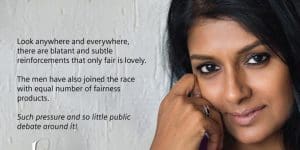

Actress and film-maker Nandita Das has brought out a very creative and engaging video about the diversity of complexions that exist in India and why the society as a collective should become more embracing of this variety than see it is as an occasion to discriminate against people with select skin colours. The video is entitled “India’s Got Colour” and features some notable names from the film industry like Raina Pathak Shah, Radhika Apte, Kanwaljit Singh, Gul Panag, Swara Bhaskar and several others.
The video brings out the stereotypes and prejudices that are prevalent in the Indian society against women with darker complexions and goes on to show how obsessed we are with fair skin.
What makes the video a sharp commentary on the inherent complexion bias in the Indian society is its ability to build the narrative on commonly heard taunts, abuses and discriminatory practices that women with darker skin tones have to undergo in India.They make the video not just relatable but also much more powerful in terms of establishing a vehement critique of the state of affairs.
PADMA LAKSHMI: Calling out colorism and how women’s self worth is evaluated on the basis of their skin color, others including Diet Sabya, chef, reality show judge and former model Padma Lakshmi and illustrator Ayush Kalra have been calling out brands that sell fairness creams, products and market the idea that being fair is what makes one ‘lovely’, demanding that such products be boycotted. Ayush’s illustration was captioned, “Didi’s flying jutti to all the fake fairness beauty products and people who sponsor them! Can’t dark skinned people be beautiful? Does being fair imply being lovely? These Racist Fairness Ads Need to be Stopped. Rise above Hate. Spread Love!!”
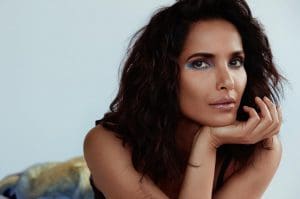
Talking about shadeism, Padma Lakshmi posted a photo that said: For years I’ve been saying that “Fair & Lovely” needs to pack their fake cosmetics and GO!! Anyone else out there sick and tired of being told that fair is equal to lovely? Because I sure as hell am. I’ve been hearing that crap since my girlhood and it did a number on my self-esteem. She captioned the post, “For those who don’t know, “Fair & Lovely” is a skin whitening cream marketed to POC. Colorism is a persistent social force in India, and many South Asian countries. I know it made me feel insecure growing up. We need to dismantle this harmful relic of colonialism through representation for all skin-tones.”
BAN FAIR AND LOVELY:
The fairness cream industry has been rapidly growing in India and expanding its consumer base, despite the growing spread of education and global exposure to progressive ideas.
It points to the fact that while we may have technologized our lifestyles and accepted consumerism as an inherent part of our lives, we have continued to remain unprogressive, orthodox and even regressive as far as our notions of beauty and fairness are concerned.
Diet Sabya reposted both Padma Lakshmi and Ayush Kalra’s posts, talking about shadeism in India. They requested people to come forward and take a stand against fairness products like fair and lovely.
Self-appointed fashion industry watchdog which has taken up quite a few social issues in the recent past, reposted both Ayush Kalra’s post and Padma Lakshmi’s, talking about shadeism in Indian society, asking people to come forward with their stories, demanding that products like Fair and Lovely, which demean women (and men too, now that we have Fair and Handsome) be banned.
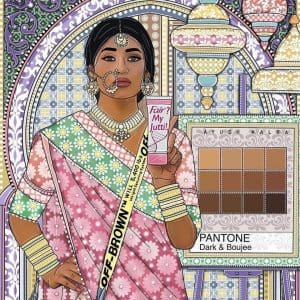
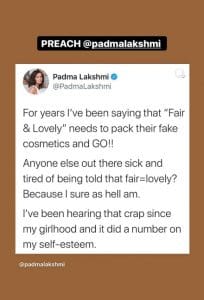
BEAUTY INDUSTRY AND COLORISM
Because the cosmetics industry tends to set the standard of beauty in society, the lack of representation of racial and/or ethnic minorities in the beauty industry can have psychological impacts on minority consumers. These impacts are to the point where their perceptions of beauty have been skewed to exclude themselves as a result of not seeing themselves represented in advertisement campaigns and product releases by major cosmetics companies. Studying colorism in the beauty industry phenomenon provides a window of opportunity for understanding the depths behind the pervasive problem facing women of all skin tones. The issue is about representation and equality. This is where the beauty industry goes past surface-level racism and meets colorism. Representation of all shades is so crucial; when deeper shades are not reflected in the industry, many feel excluded, forgotten, and diminished. The beauty industry claims inclusivity when sadly, a preference is commonly shown towards light-skinned clients. These brands must grow because inclusivity means accurately reflecting the world in which we live.
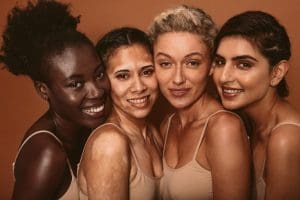
ESTÉE LAUDER: Estée Lauder campaign also fell prey to Diet Sabya’s shrwed eyes when it was called out for lightening the skin tone and photoshopping the models’ pictures. This difference was also pointed out by bollywood’s own unconventional hottie, Abhay Deol. This campaign featured Diana Penty who later blamed it on the “lightening”, Shaleena Nathani, Dayana Erappa and Shonali Singh. This post on Diet Sabya’s page invited a bigger discussion on skin color and our obsession with lighter skin tones and how beauty industry tries to manipulate people into thinking that lighter skin is synonymous to being beautiful. People discussed how the campaign messed up the real beauty of the models by meddling with their natural skin color and a lot of people came out to talk about their own experiences of discrimination that they faced based solely on their skin color.
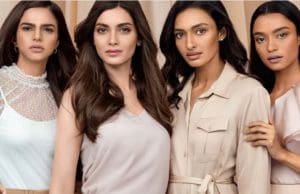
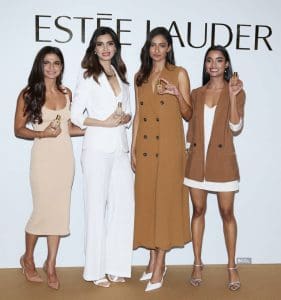
This is just one of the many examples of the industry portraying fake beauty standards in order to sell their products and make money out of people’s sentiments.
The need for brands to photoshop a model’s natural skin shows that the beauty industry does not actually believe that people of color have a place in it. They’re just coming out with more inclusive products in order to mask their true intentions. For example: Beauty Blender is one such company that launched their foundation line with 32 shades but what caught the consumers’ attention was not the inclusivity in their products, instead, the ratio of fair and medium shades to darker shades. Almost 23 out of 32 shades were for fair to medium skin tone and only 9 were for darker skin tones. This caused an outrage amongst the consumers as they believed that the brand had included darker shades for the sake of looking inclusive but clearly lacked efforts. It shows how the industry still has a long way to go before it finally accepts people of color.
Beauty industry has time and time again told women of color that they aren’t beautiful enough. Tym Buacharern, makeup artist whose works include “Black Panther, Dreamgirls, Hunger games series” to name a few has criticized beauty institutions for not teaching students how to work on all skin tones. As a result of which, most makeup artists aren’t aware of how to work on darker skin tones which leads to a lot of makeup malfunctions, further making women of color feel unwelcomed on sets.
“There is something really dehumanising about calling [products] chocolate, caramel, mocha and coffee while all the lighter shades are porcelain or ivory.” – Niellah Arboine
Brands must also ensure they are using models that represent the audience they are trying to target. According to a report conducted in 2016, just 22% of the models featured in ads in the UK and US were ethnic (black, Asian, Hispanic) while the rest (78%) were white. She says this is why it’s important to repost real women trying her products on Instagram to ensure her fans aren’t getting a stylized version of what they should look like.
Fenty was forced to apologize last month for appropriating Asian culture after it named a highlighter ‘Geisha Chic’.
While the brand, Lush is working on getting more people of color in senior roles Saunders says it’s vital that companies foster an environment to give people of color a voice.
“There are so many untapped opportunities because people [of color] are systematically ignored from hiring, education and networking. You need to ensure people feel like they can correct you,” she says.
Adepoju echoes that there is “definitely a behind-the-scenes problem”. She recalls a conversation she had with a black brand manager from L’Oréal on her podcast, Flo Beauty Talk. When questioned on her foundation in a meeting she told colleagues she had to use a competitor brand as L’Oréal did not create a one in her shade.
“If she wasn’t in the room who would have been the person to advocate for dark-skinned women?” Adepoju asks. “Your workforce needs to reflect your customer base and if you want all women to wear your products then you have to have all women in the boardroom, all women on the shop floor, all women in the lab. That’s how you get those diverse ranges out.”
It is also impossible to represent communities and identify their needs without fostering an environment where people of color are not only present but feel they can speak up. If ignored, brands will be left scrambling as more dynamic challengers provide the inclusivity consumers demand. As is often mentioned when talking about diversity, if brands employ marketers who are as diverse as the audience they are trying to reach, many of these problems could be prevented.
Ultimately, Adepoju says the strides made are a “good step” but not enough. She concludes: “If a white woman can walk into a beauty store and choose from 200 different foundation colors and Asian women can walk in and only choose from 50 it’s still not fair. Until every single brand has a baseline suitable for everyone then I think the industry won’t be where it’s supposed to be.”
INCLUSIVITY:
DEEPIKA MUTYALA
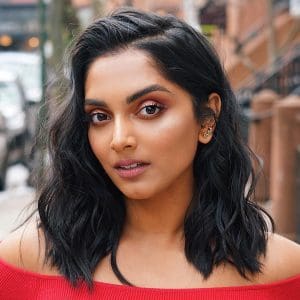
Deepica Mutyala (born July 4th, 1989) is a South-Asian beauty entrepreneur, businesswoman, and founder and CEO of Live Tinted, a multicultural community about beauty and culture. She is best known for a viral YouTube video in which she covered her dark under eye circles with red lipstick released in 2015. Within days, Mutyala was featured on The Today Show and The Dr. Oz Show. The video currently has more than 10 million views. Since then, Mutyala has been featured in the New York Times, CNN, Vogue, Marie Claire, Refinery29, and other media outlets.
In January 2018, Deepica founded and launched Live Tinted, a digital platform and a beauty product line that explores diverse beauty and creates products for “every shade in between”. The platform gives voices and story tells for underrepresented individuals and features their personal journeys with beauty, culture and identity.
In May 2019, Live Tinted released their first product based on their community feedback and an ode to Mutyala’s 2015 viral video, the Huestick, an eye, lip, and cheek multistick that balances dark circles, dark spots, and hyper-pigmentation. The Huestick is vegan, cruelty-free, and free of parabens, sulfates, and phthalates using pigments that are FDA-approved for both eye and lip applications without the use of carmine. According to Forbes, Live Tinted’s community-driven product line is “disrupting 2019 beauty standards.” The Huestick has won Elle’s Future of Beauty Award for Innovation and been referred to as “magic in a pencil” on Good Morning America.
FENTY BEAUTY
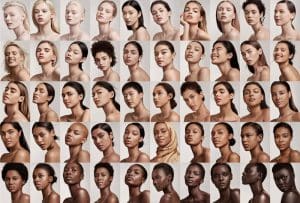

Fenty Beauty is a cosmetics brand launched in September 2017 by singer, Rihaana. The brand is popular for its broad inclusivity across skin tones and gender, especially its Pro Filt’R foundation. The orginal foundation launch included 40 shades which has now expanded to 50. The intend behind having so many shades to offer is to differentiate from other makeup companies that do not cater to broad market.
More than two years in the making, Rihanna and her team put extensive thought and research into Fenty’s products, which eventually led to its hero: 40 shades of foundation that spanned evenly across the spectrum—from the fairest to the deepest—along with a marketing campaign that made its point of view loud and clear. “Foundation for all” shouldn’t have been a revolutionary idea, and yet, with so many women starved of accessible base makeup that actually worked for their complexion, that’s exactly what it was.
Unlike other celebrity lines, Rihanna didn’t just slap her name on the label and call it a day. She was 100 percent involved in the process, including packaging, marketing, and formulation—something she said was especially important to her given the number of times she’d walk away from the makeup chair only to be disappointed.
“I saw other dark-skinned girls in Sephora getting matched in this foundation, and it literally melted by heart,” Tang wrote on Instagram the weekend of its launch, which promptly went viral when the Fenty Beauty account re-grammed it. It wasn’t just the deep shades flying off shelves either.

Krystal Robertson, a 26-year-old nurse from Mississippi, also made headlines for her review of Fenty’s Pro Filt’r Foundation in #110. As a woman with albinism, it was the first time she’d ever found a shade that truly matched and didn’t come off orange. What captured the awe of the Internet the most was that it wasn’t even the lightest shade. “I felt that me finally being myself was worth it,” she wrote online. “It actually means the world that Rihanna not only made a diversity of shades for all women of color, but she brought us together.”
As with the product line, Fenty Beauty also drew international acclaim for diversity in its advertising campaign, which prominently featured numerous black models and other models of color. Faces of the initial Fenty Beauty campaign included Slick Woods, Halima Aden, Leomie Anderson, Indyamarie Jean, Paloma Elsesser, Selena Forrest, Camila Costa, and Duckie Thot. Soon after Rihanna released her line, other brands such as Make Up For Ever and L’Oréal started ad campaigns aimed at women of color.
From the beginning, our founder Rihanna was very clear that absolutely no one was to be excluded. Her vision of “Beauty for All” became our marketing mission.
Fenty Beauty first launched with 40 beautiful shades of foundation and today we have 50. At the time, there wasn’t a brand that truly reached everyone from the lightest skin to the darkest. Many undertones, such as olive ones like mine, were also underserved in beauty. Inclusion was more than the number of shades; it was the well-crafted nuance of each shade in the range that also served as a proof point. This allowed so many women to find themselves in the brand and feel included.
ARTICLE BY : Vasavi Mehta & Bhavika Gulrajani
References:
https://openscholarship.wustl.edu/cgi/viewcontent.cgi?article=1553&context=law_globalstudies
https://digitalbeauty.com/inclusivity-in-beauty/
https://www.wellandgood.com/good-looks/diversity-in-the-beauty-industry/
https://en.wikipedia.org/wiki/Fenty_Beauty
https://www.marketingweek.com/beauty-industry-failing-women-colour/
Picture Credits: Google images
- Facebook : fashionvaluechain
- Instagram : fashionvaluechain
- Pinterest: fashionvaluechain
- Linkedin : fashionvaluechain
- twitter : fvcmedia

